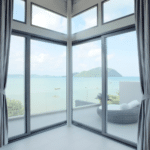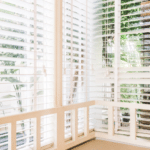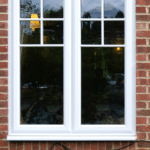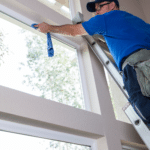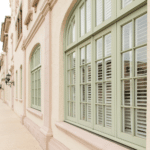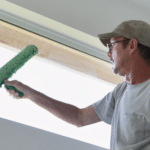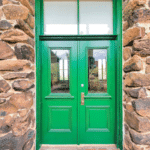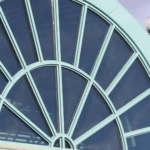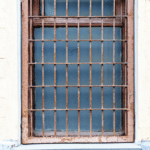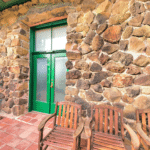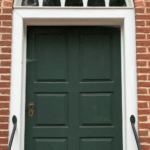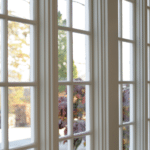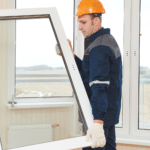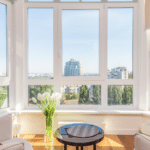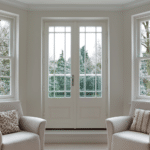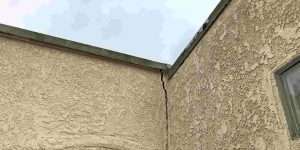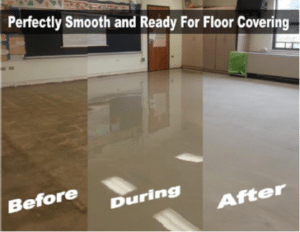Enhance Your Space with Transom Windows: A Complete Guide
Transom Windows Definition and Purpose
Transom windows, originally hailing from the 14th century, have become an integral part of architectural design, enabling additional light and air circulation in buildings. Traditionally, transom windows were hinged at the bottom, allowing for ventilation while maintaining privacy. In modern architecture, they are often fixed and purely decorative, serving to enhance the visual appeal of a space. Whether in a residential or commercial setting, transom windows add a touch of elegance and functionality, contributing to the overall aesthetic and ambience of the structure.
Transom Windows Historical Significance
The historical significance of transom windows dates back to the time when buildings were designed to maximize natural light and air circulation. Originating in Europe, these windows were predominantly used in Gothic and Renaissance architecture. Over time, transom windows have evolved, with styles ranging from simple rectangular grids to more elaborate designs featuring stained glass or intricate patterns. Their functionality has remained consistent, with their historical significance showcasing the architectural and functional contributions that have stood the test of time.

Photo by cottonbro studio
Types of Transom Windows
Fixed Transom Windows
Fixed transom windows are designed to remain sealed shut permanently. Their primary role is to allow natural light to enter a room while maintaining privacy and security. These windows are a popular choice for adding height to a space, creating a sense of openness, and improving natural ventilation. By allowing sunlight to flood into the room from above, fixed transom windows can also contribute to reducing the need for artificial lighting during the day, promoting energy efficiency.
Operable Transom Windows
Operable transom windows are designed to open and close, providing more airflow and ventilation. They offer the flexibility to control the amount of fresh air entering a room, optimizing temperature and air circulation. This type of transom window is particularly advantageous in spaces where adjustable ventilation is desirable, such as kitchens and bathrooms. Operable transom windows can complement the overall design of a room while serving a practical function.
Stained Glass Transom Windows
Stained glass transom windows add a touch of artistic elegance to any architectural design. They are renowned for their ornate beauty and can be customized to reflect various patterns, colors, and designs. Beyond their visual appeal, stained glass transom windows hold symbolic and historical significance, often found in religious or historically significant buildings. Their captivating beauty and ability to diffuse light make them a charming addition to any space, evoking a sense of timeless sophistication and cultural artistry.
These various types of transom windows offer a blend of practical functionality and aesthetic allure, catering to diverse design preferences and functional requirements. Whether aiming to invite more natural light into a room or to add a decorative touch to architectural elements, the choice of transom windows can significantly elevate the ambiance and usability of a space.
Benefits of Transom Windows
Enhanced Natural Light
Transom windows maximize daylight and creating a brighter, more inviting indoor space. By allowing natural light to penetrate deeper into a room, these windows help reduce the reliance on artificial lighting, thereby saving energy costs and fostering a more sustainable living environment. The abundant natural light also contributes to a more uplifting and cheerful ambiance, making the space more visually appealing and comfortable for occupants.
Improved Ventilation
Transom windows are instrumental in promoting air circulation and maintaining a comfortable atmosphere within a room. Positioned above eye level, these windows facilitate the release of warm air, allowing for effective cross-ventilation while preserving privacy. This enhanced airflow not only contributes to a healthier indoor environment by reducing the risk of mold and mildew but also helps regulate room temperature, ensuring a consistently pleasant and breathable space throughout the day.
Architectural Charm
Transom windows add character and visual appeal to architectural designs, enhancing the overall aesthetic of a building. Whether incorporated in traditional or modern structures, these windows can elevate the exterior and interior aesthetics, creating an attractive focal point that lends a touch of timeless elegance to the overall design. The unique charm of transom windows can evoke a sense of sophistication and style, contributing to the distinctiveness and allure of any space they adorn.
Incorporating Transom Windows in Design
Interior Design Applications
In interior design, transom windows can be strategically incorporated into various areas of a home or commercial space to achieve a seamless blend of aesthetics and functionality. Some creative applications include:
- Kitchen: Install transom windows above cabinetry to bring in natural light without compromising privacy.
- Hallways and Foyers: Utilize transom windows to brighten and visually expand narrow spaces, creating an open and inviting atmosphere.
- Bathrooms: Incorporate transom windows near the ceiling to introduce natural light while maintaining privacy.
- Living Rooms and Bedrooms: Enhance the overall visual appeal by using transom windows to draw attention to architectural features or to provide more ventilation.
The placement and design of transom windows within interiors can contribute to an increased sense of openness and illumination, ultimately transforming the space into a more comforting and visually dynamic environment.
Exterior Architectural Considerations
When considering exterior architecture, the incorporation of transom windows requires thoughtful planning and attention to detail. Key aspects to consider include:
- Strategic Placement: Integrate transom windows above doors or other windows to introduce natural light and visually enhance the architectural facade.
- Aesthetic Appeal: Choose window designs and materials that complement the overall exterior style while also providing a distinctive touch.
- Practical Functionality: Ensure that the placement of transom windows allows for proper ventilation and contributes to energy efficiency without compromising the structural integrity.
Maintaining and Caring for Transom Windows
Cleaning and Maintenance Tips
When it comes to cleaning transom windows, using a mild detergent mixed with water is an effective way to remove dirt and grime. A non-abrasive sponge or cloth should be used to avoid scratching the surface. It’s important to pay attention to the window tracks and sills, ensuring they are free from debris that could affect the window’s functionality.
Regular inspections identify any signs of wear and tear. Checking for water damage, cracks, or gaps around the window frame is essential. Addressing these issues promptly can prevent more significant problems down the line.
Addressing Common Issues
Condensation, leaks, and wear over time are common issues that transom windows may encounter. To tackle condensation, improving the ventilation in the room can help reduce moisture buildup. Also, using a dehumidifier can help maintain a balanced indoor humidity level.
For leaks, inspecting the window seals and weatherstripping for any gaps or damage is important. Replacing worn-out seals and weatherstripping can prevent water infiltration and energy loss.
Over time, the moving parts of the transom window may experience wear. Lubricating hinges and tracks with a silicone-based lubricant can keep the windows functioning smoothly.
With regular cleaning and prompt attention to any issues, transom windows can maintain their aesthetic appeal and functionality for years to come.
Conclusion
Transom windows have proven to be a timeless addition to architectural and interior design, offering a perfect blend of aesthetic appeal and functionality. With their ability to bring in natural light, enhance ventilation, and create an open and airy atmosphere, transom windows continue to be a popular choice for both residential and commercial spaces. Their versatility in complementing various design styles and their knack for adding visual interest make them an invaluable asset in modern construction and renovation projects. Whether accentuating the charm of historical buildings or adding a touch of sophistication to contemporary spaces, transom windows remain a design element that effortlessly stands the test of time.




